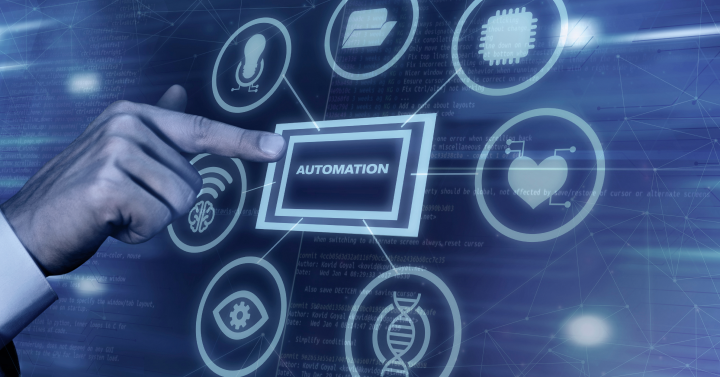We build digital products to help businesses succeed!
Introduction
AI Conversational Bots in Government services are transforming the way public services operate. These intelligent virtual assistants, fueled by artificial intelligence, revolutionize citizen interactions, streamline queries, and enhance accessibility. As we delve into their pivotal role, let’s explore how these bots are reshaping public service delivery. According to Gartner, by 2022 over 50% of medium to large governments will have deployed chatbots. McKinsey predicts that by 2022, 70% of white-collar workers will interact regularly with conversational platforms.
Deloitte reports that AI Conversational Bots in Government have the potential to free up 96.7 million working hours across the federal government each year, a cost savings of $3.3B annually. These figures underscore the transformative potential of AI bots in government, promising efficient services and improved citizen experiences. In this blog article, we’ll explore how these AI-powered conversational bots are revolutionizing government services, making them more accessible, efficient, and citizen-friendly. Stay tuned as we uncover the potential of AI in reshaping the future of government services.

5 Major Benefits of AI Conversational Bots in Government Services
1. Revolutionizing Public Information Dissemination:
AI bots act as virtual information hubs, instantly providing citizens with accurate answers to their queries. Whether it’s explaining government policies, public health guidelines, or local services, these bots ensure timely access to critical information. Unlike traditional office hours, AI bots operate round the clock. Citizens can seek assistance at any time, reducing frustration and enhancing overall service efficiency. Language limitations can make it difficult for people in multicultural communities to communicate effectively. AI bots bridge this gap by offering multilingual support, ensuring that citizens receive information in their preferred language.
2. Efficient Query Handling with AI Bots:
When citizens submit queries, bots categorize and route them to the appropriate government department or resource. This automated triage streamlines the process, saving time for both citizens and government staff. Human agents often grapple with a high volume of routine inquiries. By handling repetitive questions, AI bots free up human resources to focus on more complex tasks, such as policy analysis or personalized assistance. Bots maintain uniformity in information delivery. Citizens receive consistent answers regardless of the time of day or the specific bot they interact with, minimizing errors and confusion.
3. Enhancing Service Accessibility:
AI bots offer intuitive interactions through messaging platforms, websites, or mobile apps. Citizens, regardless of their technical expertise, can easily access government services. With the proliferation of smartphones, mobile-friendly bots allow citizens to engage with government services seamlessly. Whether it’s renewing licenses, checking eligibility for benefits, or reporting issues, mobile integration enhances accessibility. AI bots cater to differently-abled individuals. They provide text-based interactions, making services accessible to those with visual impairments or other disabilities.
4. AI-Powered Chatbots for Citizen Engagement:
Bots notify citizens about policy changes, upcoming events, or deadlines. For instance, they can remind citizens to vote, pay taxes, or participate in community programs. Bots actively seek feedback from citizens. Whether it’s gauging satisfaction with services or identifying areas for improvement, this data informs policy decisions. AI bots analyze user behavior and preferences. Based on this data, they tailor responses, recommend relevant services, and provide personalized assistance.
5. Streamlining FAQs: How Bots Handle Common Queries:
Frequently asked questions (FAQs) can bog down government helplines. AI bots swiftly address these common queries, reducing response time and ensuring citizens receive timely information. During peak periods (such as tax season or elections), bots handle surges in inquiries without delays. Their scalability ensures uninterrupted service. Automated responses save resources. Governments can allocate budgets more effectively, directing human resources to specialized tasks while bots handle routine interactions.
AI conversational bots in government services play a pivotal role in modernizing the services, making them more accessible, efficient, and citizen-centric. Their impact extends beyond mere automation; they empower citizens and enhance transparency in governance.

Successful Implementations of AI conversational bots in Government services
Let’s explore some real-world examples of AI conversational bots in government services for citizen’s usage and the governments that have adopted these solutions:
1. DigiSaathi : National Payments Corporation of India (NPCI)
DigiSaathi, built by Gupshup, is a 24×7 helpline jointly launched by NPCI and Payment System Operators. It provides assistance with digital payment product and service queries. Users can access DigiSaathi via a toll-free number, short code, website, and chatbot. It helps users find information and resolve issues related to digital payments.
2. Bangalore Metro Rail Corporation Ltd (BMRCL)
BMRCL’s automated text platform on WhatsApp is developed by Yellow.ai, and enables users to inquire about routes, ticket prices, and metro rail pass booking. It has seen over 15 million messages exchanged and on boarded over 100,000 users. Now, commuters can use WhatsApp to purchase Namma Metro tickets and recharge travel passes.
3. Rammas: Government of Dubai
Rammas is Dubai’s chatbot, providing information and services to citizens. It covers various topics, including government services, events, and public inquiries. Citizens can interact with Rammas through DEWA’s smart app, website, Amazon’s Alexa, Google Assistant, and social media channels.
4. EMMA : Department of Homeland Security (USA)
Developed for the U.S. Citizenship and Immigration Services, EMMA handles one million applicants per month. It provides information on immigration services, green card acquisition, passports, and other USCIS offerings. EMMA supports both English and Spanish languages1.
5. MISSI : Government of Mississippi State
MISSI assists residents and visitors by providing information about the state of Mississippi. Users can interact with MISSI through the Mississippi State website chat or voice input via Amazon’s Alexa. It covers public services, taxation, health services, public transport, job opportunities, and more
These examples demonstrate how AI Conversational Bots in Government services are transforming government services, improving citizen interactions, and enhancing overall efficiency.
Conclusion
The integration of AI Conversational Bots in Government services is not just a technological advancement, but a transformative shift in how public services are delivered. These bots, with their ability to provide instant, personalized responses, are revolutionizing the way citizens interact with their government, making it more accessible and efficient. They are not only reducing the workload of government employees but also ensuring that citizens get accurate information promptly.
The potential of AI Conversational Bots in Government services is vast, from simplifying administrative procedures to enhancing citizen engagement. As we move forward, it is crucial to continue exploring and harnessing this potential to create a more responsive and effective government. The future of government services lies in the successful implementation of AI conversational bots, and it is a future that promises increased efficiency, accessibility, and citizen satisfaction.
Offices
India
86P, 4th Floor, Sector 44, Gurugram, Haryana 122003Singapore
#21-02, Tower 2A, The Bayshore condo, Singapore 469974Canada
8 Hillcrest Avenue Toronto ON M2N 6Y6, CanadaUS
31 River CT, Jersey City, New JerseySubscribe to our newsletter
Our Services
Top Reads
India
86P, 4th Floor, Sector 44, Gurugram, Haryana 122003
Singapore
#21-02, Tower 2A, The Bayshore condo, Singapore 469974
Canada
8 Hillcrest Avenue Toronto ON M2N 6Y6, Canada
US
31 River CT, Jersey City, New Jersey
Contact us
info@primathon.in
+91-9205966678
Reviews


